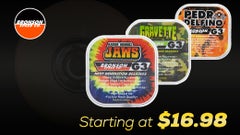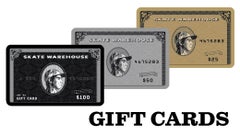How To Choose The Best Skateboard Wheel | Shape
Along with size and durometer, wheel shape plays a part in deciding your overall type of skating. Some key factors when choosing a wheel shape are wheel width (overall width of the wheel), contact patch (area of the wheel that contacts the ground) and the cut of the wheel (shape of the sidewalls of the wheel).
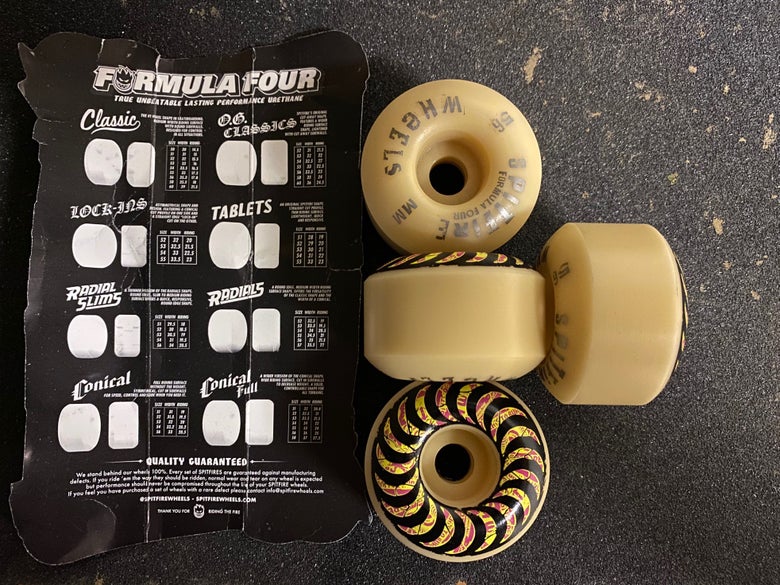
Contact Patch
Maybe not the first thing that comes to mind when looking for skateboard wheels but perhaps the most important is the contact patch; the outer most part of the wheel that actually comes into contact with the ground. A large contact patch provides more grip than a small contact patch. On the other hand, a small contact patch sacrifices some grip for the ability to slide easier for tricks like Noseslides, Tailslides and Powerslides. In most cases the contact patch is closely related to the wheel’s width.

Wheel Width
Wheels are sold in various widths. Common widths are slim, full or wide, and standard. Wide wheels have the biggest contact patch so they provide the most grip. They also add a little more weight to your set up. Transition skaters usually favor a wide shaped wheel for their grip and stability on smooth, slippery surfaces. Slim shaped wheels are targeted towards technical street skating because of their lightweight and smaller riding surface, which provides better slide ability. An all around width and likely the most common is the standard width. A true classic that can be used when skating both street and transition.
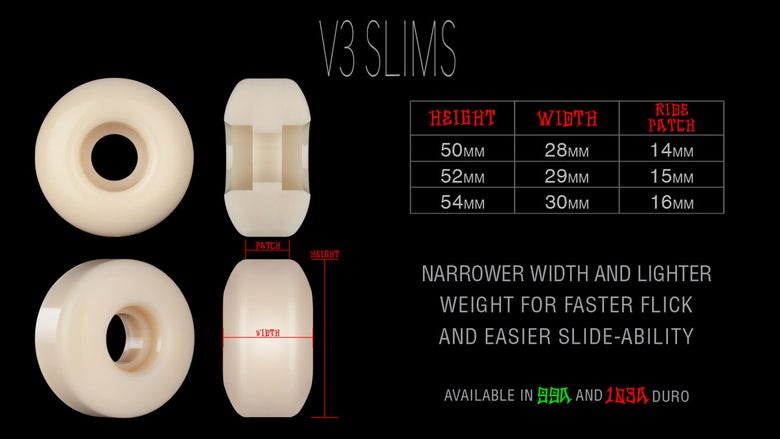
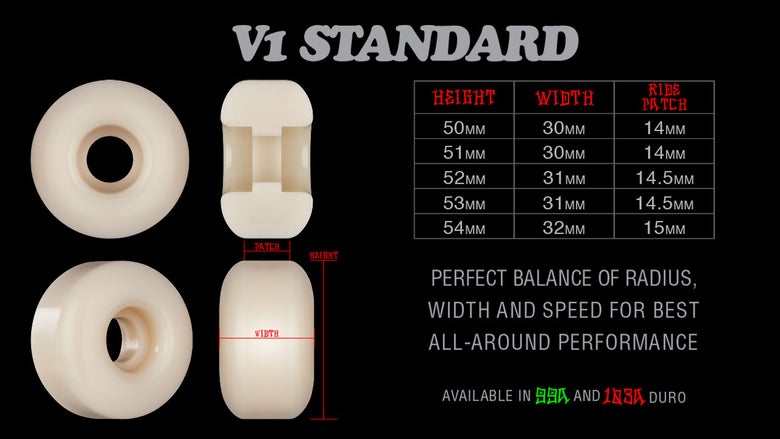

Cut
The cut of the wheel refers to the shape of the wheel’s sidewall. This can affect the wheels weight, grip, ability to lock into grinds and ability to roll over coping. Classic, conical, and radial are common cuts you’ll see when shopping for wheels.
A classic shaped wheel is the most common. Featuring a round profile, these wheels have a smaller contact patch allowing them to slide easier. The round shape also helps when rolling over things at an angle, like coping or curbs when doing slappies. If you’re unsure on which wheel cut to go with, you can’t go wrong with some classics.
Wheels with a conical sidewall offer a wider contact patch that provides more grip. The cut off profile makes the wheels lighter and less prone to hang ups when skating transition. Pool and transition skaters tend to favor conical wheels.
Radial wheels have a profile like a radius. These wheels offer a round shape that still delivers a wide contact patch. Compared to the classic shape, radials provide a little more support when locking into grinds and a little less slide.
Some newer shapes that have emerged are lock-ins and tablet. With an asymmetrical shape, lock-ins have an outer profile similar to conical wheels but a sharply cut off inner profile to provide maximum support for locking into tricks. Tablet wheels have a sharply cut off profile that results in a slim wheel with a wide contact patch.
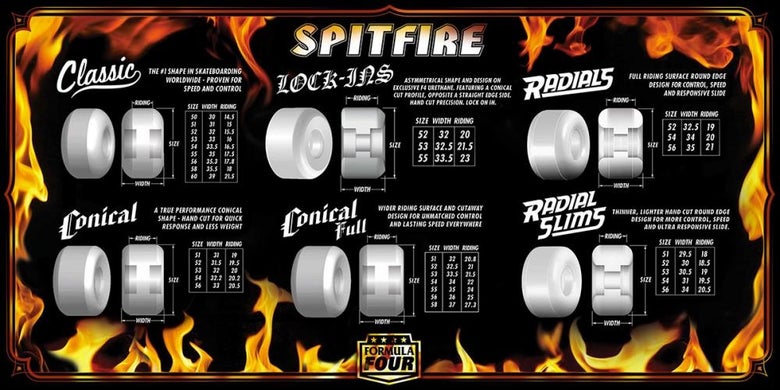
These guidelines are intended to give you a little direction in your search for the best skateboard wheel. While most shapes are generally intended for a specific type of skating, wheel choice ultimately comes down to personal preference. The best way to decide what wheel shape is best for you is trial and error. Try out a few different wheel shapes over time and decide what you like the best.
